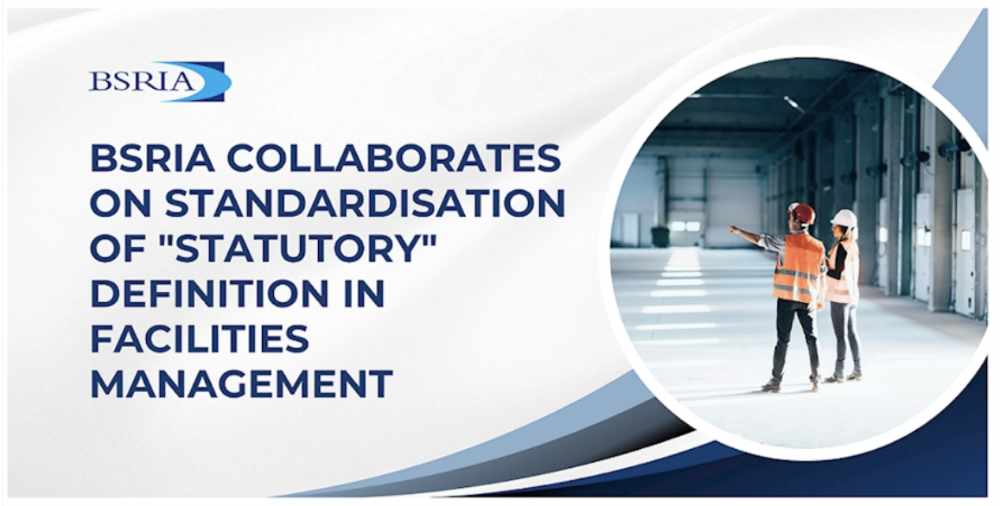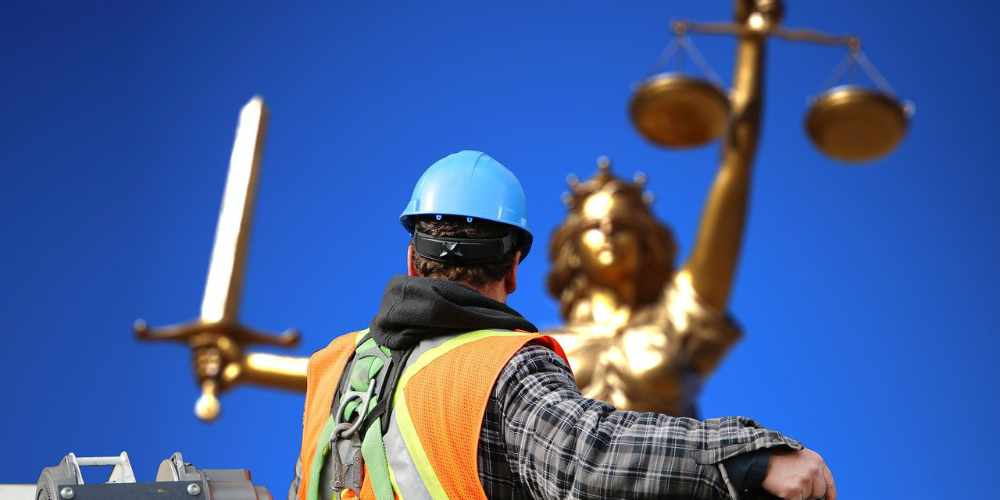BSRIA collaborates to establish common definition of Statutory in workplace and facilities management
BSRIA is pleased to announce its role in a major collaborative effort to establish a standard definition of "statutory" within the workplace and facilities management (WFM) sector. This initiative, in partnership with SFG20 (part of the Building Engineering Services Association (BESA)), the Chartered Institution of Building Services Engineers (CIBSE), and the Institute of Workplace and Facilities Management (IWFM), aims to standardise the interpretation and application of statutory requirements across the industry.
The agreement, facilitated by IWFM’s Procurement and Contract Management Special Interest Group (SIG), addresses the need for consistency in WFM contracts. Historically, varied interpretations of statutory requirements have led to compliance issues and potential risks of non-compliance.
The agreed definition of "statutory" encompasses anything required by primary legislation, such as Acts of Parliament, and secondary legislation, like Statutory Instruments. It also includes specific activities outlined in government guidance and Approved Codes of Practice (ACoPs) from agencies like the Health and Safety Executive (HSE), as well as industry standards and guidance from professional bodies.
This unified definition aims to raise standards, reduce ambiguity in contractual specifications, and ensure properties consistently meet statutory requirements. BSRIA is honoured to contribute to this important initiative, supporting the industry in achieving clear and consistent compliance standards.
The full statement defining "statutory" is as follows:
"The term 'statutory' denotes anything required by primary legislation such as Acts of Parliament and secondary legislation such as Statutory Instruments (including Regulations). When working to achieve statutory compliance, primary and secondary legislation often focuses on general outcomes rather than prescribing specific activities. The specific activities required to meet statutory compliance may, therefore, be included in government guidance and Approved Codes of Practice (ACoPs) published by agencies such as the Health and Safety Executive (HSE), or other industry standards and/or guidance (BSI standards, publications by trade associations and professional bodies, etc). In the absence of a traceable reference to legislation, following industry standards and/or guidance may assist in discharging duties under the statutory requirements. For example: in relation to electrical installations, The Health and Safety at Work etc. Act 1974 led to the Electricity at Work Regulations 1989. This, in turn, is supported by the HSE issued guidance note HSR25 which also references British Standard 7671, which is supported by an on-site guide."
This article appears on the BSRIA news and blog site as 'BSRIA Collaborates to Establish Common Definition of "Statutory" in Workplace and Facilities Management' dated May 2024.
--BSRIA
[edit] Related articles on Designing Buildings
- BSRIA articles.
- Non-statutory consultees for planning permission.
- Non statutory consultees
- Statutory.
- Statutory approvals for buildings.
- Statutory authorities.
- Statutory consultee.
- Statutory declaration excluding security of tenure.
- Statutory formulae for rating valuation.
- Statutory instruments.
- Statutory obligations.
- Statutory permissions.
- Statutory planning notices
- Statutory Procedures for Planning.
- Statutory sick pay.
- Statutory undertakers.
Featured articles and news
Amendment to the GB Energy Bill welcomed by ECA
Move prevents nationally-owned energy company from investing in solar panels produced by modern slavery.
Gregor Harvie argues that AI is state-sanctioned theft of IP.
Heat pumps, vehicle chargers and heating appliances must be sold with smart functionality.
Experimental AI housing target help for councils
Experimental AI could help councils meet housing targets by digitising records.
New-style degrees set for reformed ARB accreditation
Following the ARB Tomorrow's Architects competency outcomes for Architects.
BSRIA Occupant Wellbeing survey BOW
Occupant satisfaction and wellbeing tool inc. physical environment, indoor facilities, functionality and accessibility.
Preserving, waterproofing and decorating buildings.
Many resources for visitors aswell as new features for members.
Using technology to empower communities
The Community data platform; capturing the DNA of a place and fostering participation, for better design.
Heat pump and wind turbine sound calculations for PDRs
MCS publish updated sound calculation standards for permitted development installations.
Homes England creates largest housing-led site in the North
Successful, 34 hectare land acquisition with the residential allocation now completed.
Scottish apprenticeship training proposals
General support although better accountability and transparency is sought.
The history of building regulations
A story of belated action in response to crisis.
Moisture, fire safety and emerging trends in living walls
How wet is your wall?
Current policy explained and newly published consultation by the UK and Welsh Governments.
British architecture 1919–39. Book review.
Conservation of listed prefabs in Moseley.
Energy industry calls for urgent reform.




























